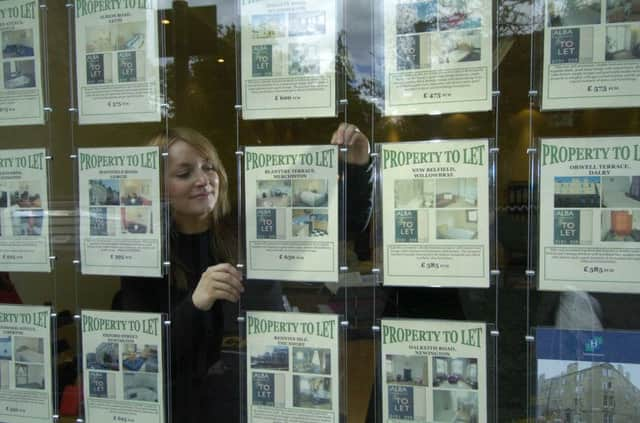Comment: Supply must meet rental demand


This was partly related to changes in the fee structure charged by letting agents, but there is absolutely no doubt that since the recession, and throughout the more recent recovery, rental costs have gone up inexorably due to growing demand.
This trend has accelerated since 2010 when the consequences of the financial crisis began to have a direct effect on people’s lives. In Scotland, it is the new mortgage regime rather than rising house prices (eg lenders requiring bigger deposits) that is compelling the vast majority of young single people and couples to rent.
Advertisement
Hide AdAdvertisement
Hide AdHowever, compulsion is only one side of the story. To those frustrated would-be owner-occupiers can be added a growing sector of society for whom renting has become the first choice because of its relatively inexpensive entry levels and its flexibility. For example, a flat in a desirable area like Stockbridge in Edinburgh or Hyndland in Glasgow, on sale for around £180,000, might require a deposit of £36,000 for a buyer, whereas the rental deposit (returnable at the end of the lease) would be around £1,000.
Owner-occupation should, of course, result in a capital asset over time – albeit far less pronounced than earlier years – whereas renting will not. But finance-savvy younger people understand that there are ways other than home-ownership of building up a capital sum for security in later life or to be passed on to one’s children – and the Chancellor’s intention to bring in “pensions freedom” from next year may give impetus to that trend.
Nevertheless, the bottom line is that the demand for rental property is not being serviced by the current level of supply. Some people with a political axe to grind will see the solution in rent controls, but history shows us this will only serve to dissuade would-be investors from bringing new rental stock to the market and encourage existing landlords to sell up.
For tenants, both outcomes would only exacerbate the problem. Hopefully financial institutions can play a role in preventing this occurring by funding additional homes for rent, either as blocks of new, purpose-built rental properties or the refurbishment of existing properties.
The situation is such that 1,000 new properties for rent could appear in Edinburgh and Glasgow almost overnight and it still would not satisfy all the demand. The result would probably be a small reduction in average rental levels, which would of course delight tenants, but the anticipated demand from newcomers to the market would ensure rents remained sufficiently high to justify investor confidence.
About 84 per cent of privately rented properties in Scotland are owned by non-professional, private landlords – individuals, married couples or family trusts. Up to now they have experienced impressive overall returns (ie, in terms of capital growth and rental income) and opportunities for newcomers of this type remain. But the market is also ripe for more involvement by the professionals – builders and their institutional backers.
The Scottish Government must also play a role in this by recognising how vital it is that we see an increase in the availability of rental stock and by actively encouraging institutional investment, while also ensuring that existing planning legislation does not act as a barrier to new investment.
• Rob Trotter is senior property manager with DJ Alexander, the Edinburgh- and Glasgow-based letting and estate agency.